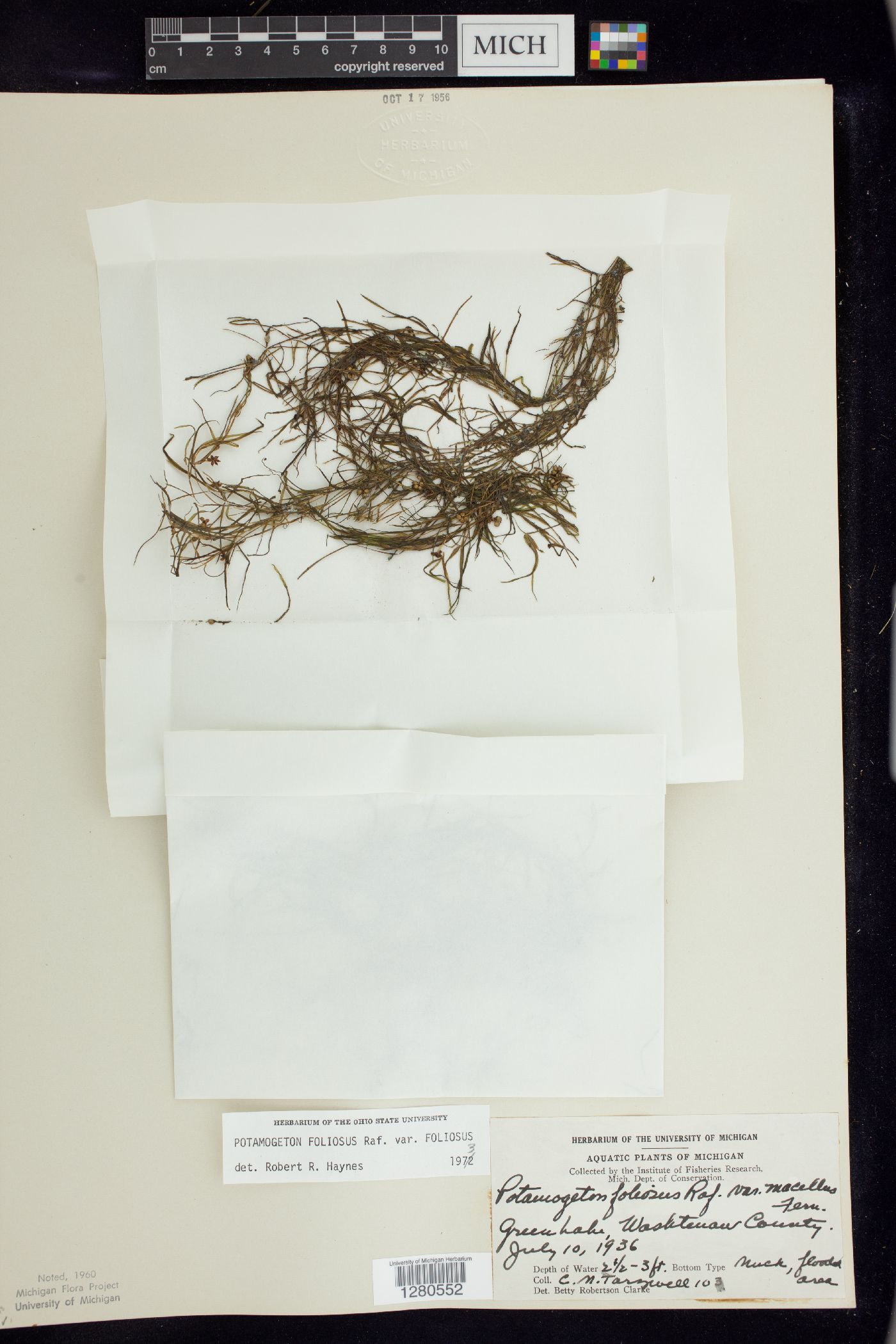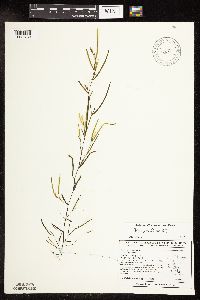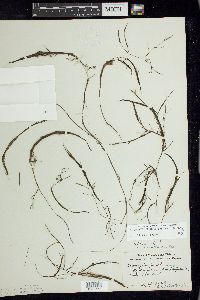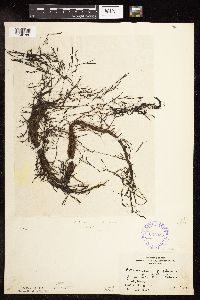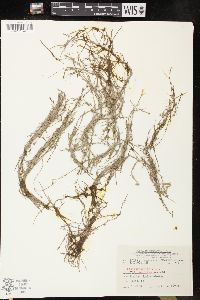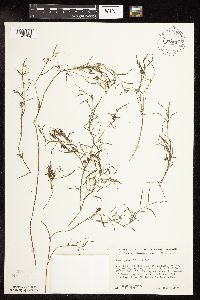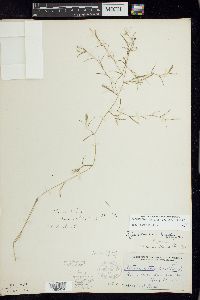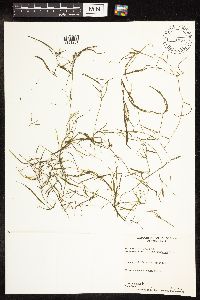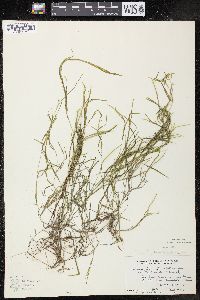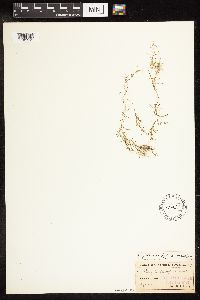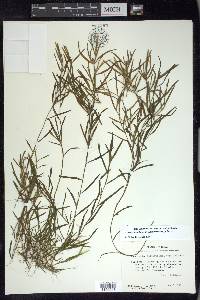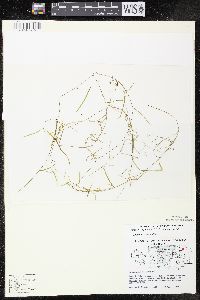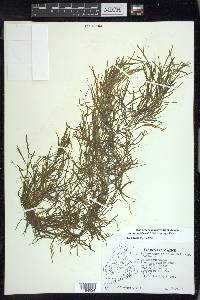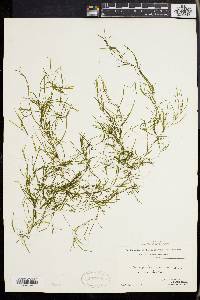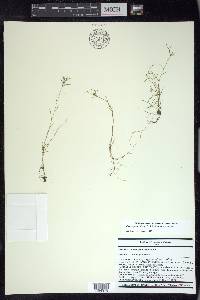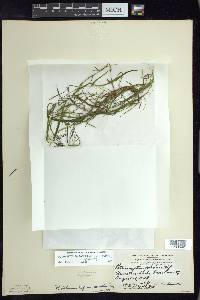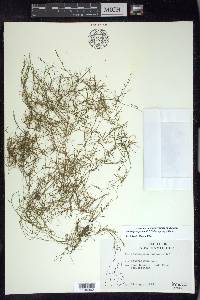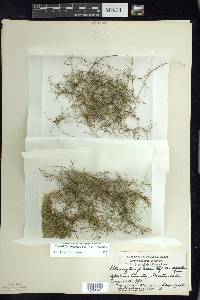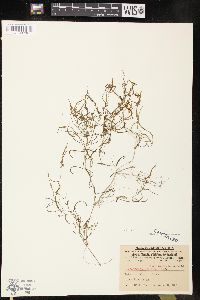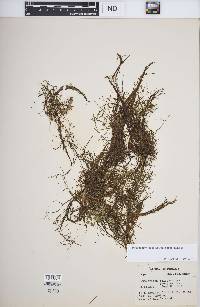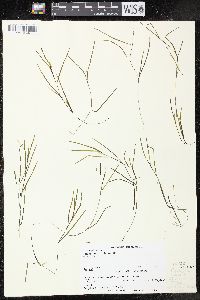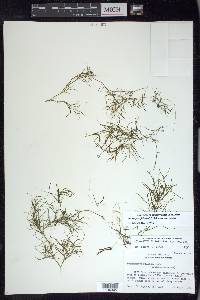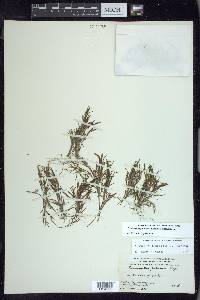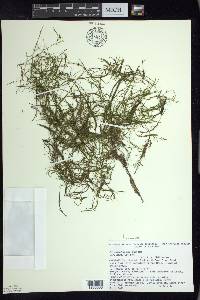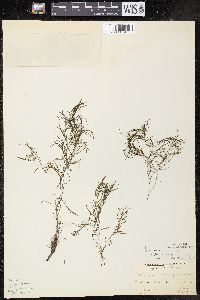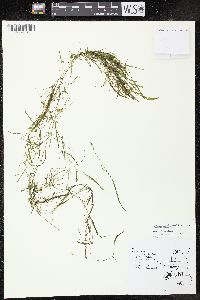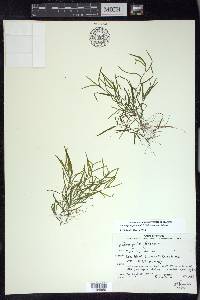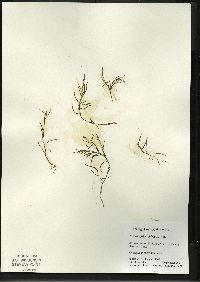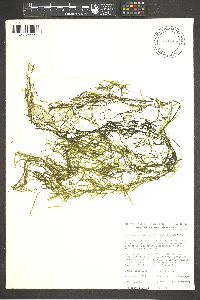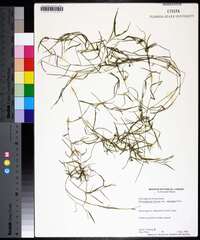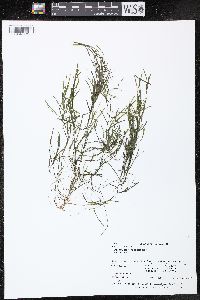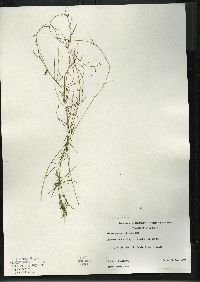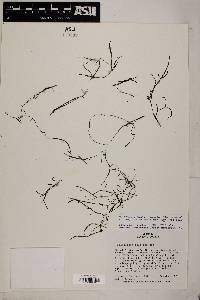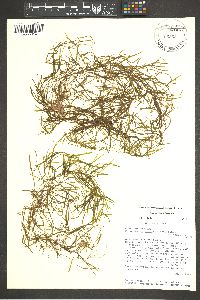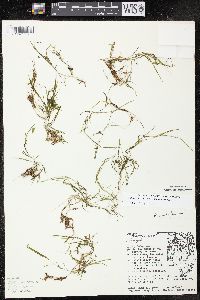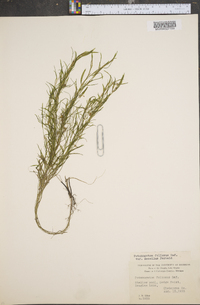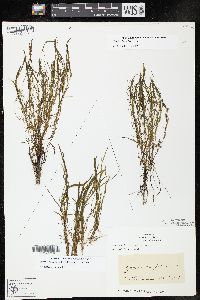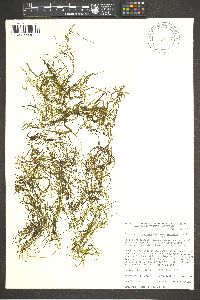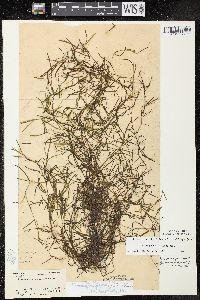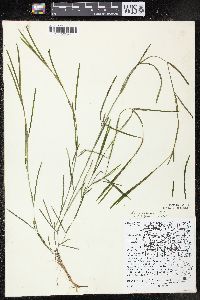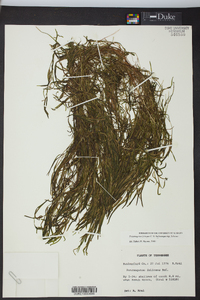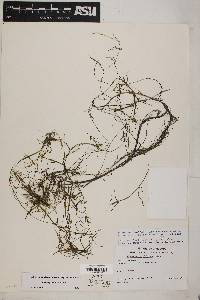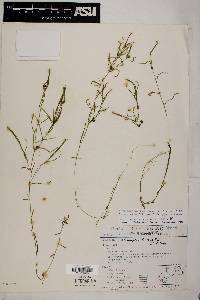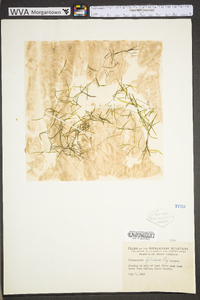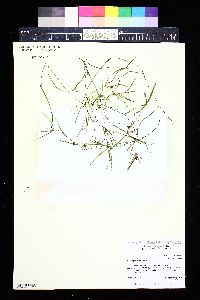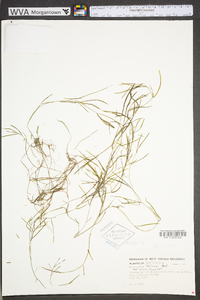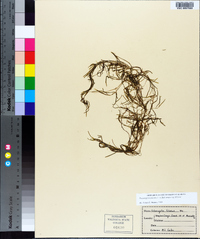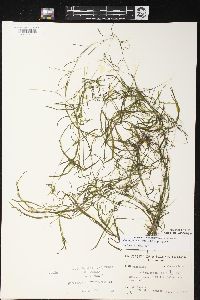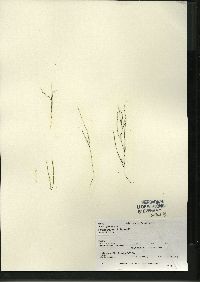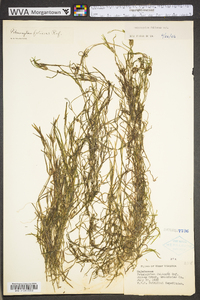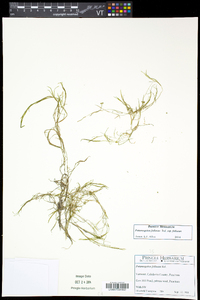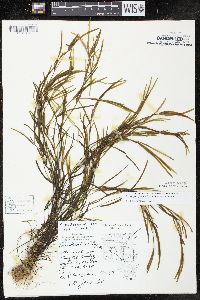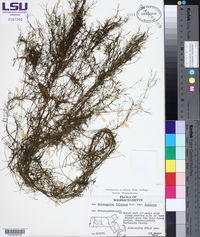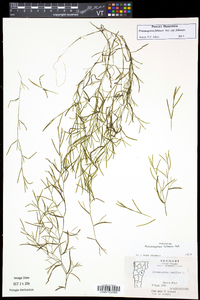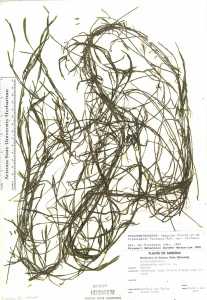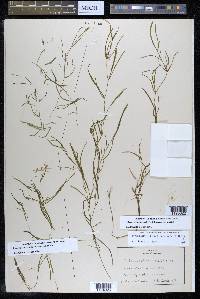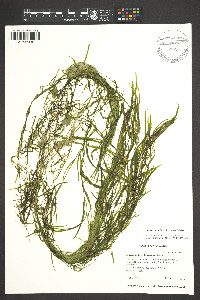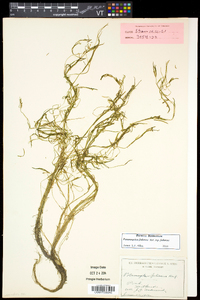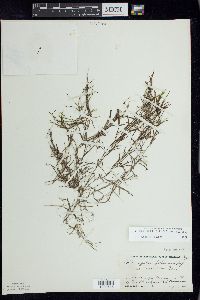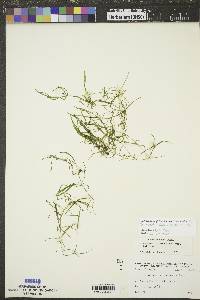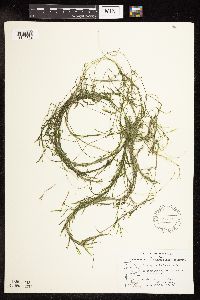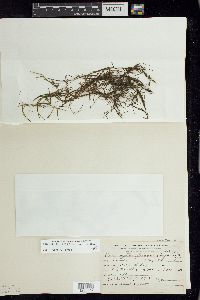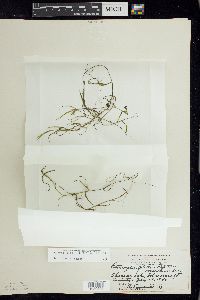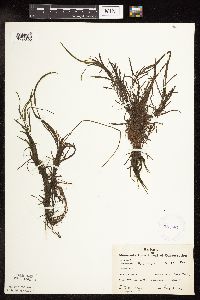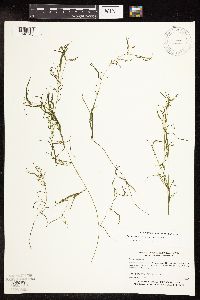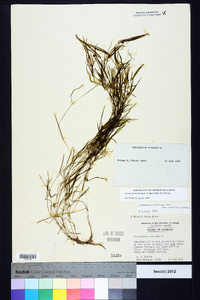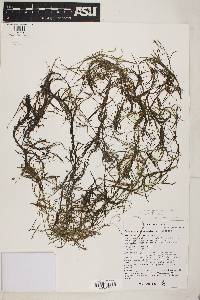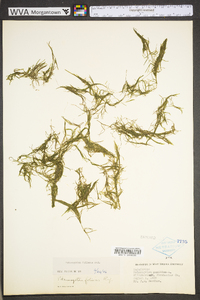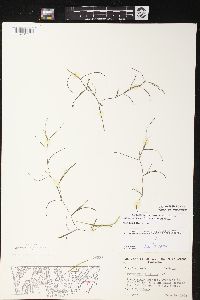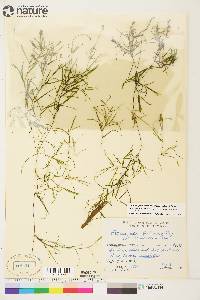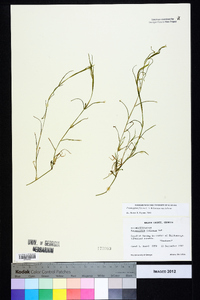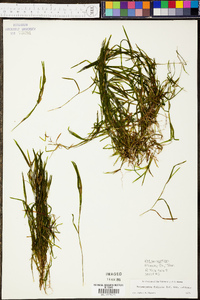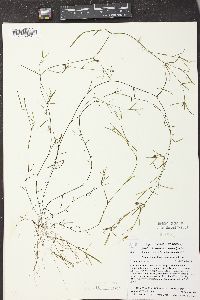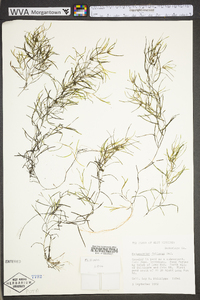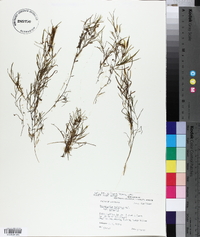
|
|
|
|
Family: Potamogetonaceae
Leafy Pondweed
[Potamogeton californicus (Morong) Piper, morePotamogeton curtissii Morong, Potamogeton foliosus var. genuinus Fern., Potamogeton foliosus var. macellus Fern., Potamogeton pauciflorus var. californicus Morong] |
Stems: glands rarely present, less than or equal to 0.3 mm diam. Leaves: stipules greenish to brown, delicate to slightly fibrous, veins decaying with age. Inflorescences: spikes continuous, rarely interrupted. Fruits olive-green to green-brown, 1.5--2.7 ´ 1.2--2.2 mm; keel greater than or equal to 0.2 mm high; beak 0.2--0.6 mm. 2n = 28. Flowering and fruiting spring--fall. Wide variety of waters of lakes and streams, either slow- or rapid-ly flowing; 0--2300 m; Alta., B.C., Man., N.B., N.W.T., N.S., Ont., P.E.I., Que., Sask., Yukon; Ala., Alaska, Ariz., Ark., Calif., Colo., Conn., Del., D.C., Fla., Ga., Idaho, Ill., Ind., Iowa, Kans., Ky., La., Maine, Md., Mass., Mich., Minn., Miss., Mo., Mont., Nebr., Nev., N.H., N.J., N.Mex., N.Y., N.C., N.Dak., Ohio, Okla., Oreg., Pa., R.I., S.C., S.Dak., Tenn., Tex., Utah, Vt., Va., Wash., W.Va., Wis., Wyo.; Mexico; West Indies, Central America (Guatemala, Costa Rica). Potamogeton foliosus subsp. foliosus is probably the most common linear-leaved species of the family in North America, and it is probably the easiest to determine. Any linear-leaved Potamogeton specimen with fruits having an undulating winglike abaxial keel most likely is this taxon.
Perennial submersed aquatic herb 4 cm - 0.75 m tall Stem: freely branched, slightly compressed, to 1 mm wide, jointed. Leaves: submersed, more or less arranged spirally, stalkless, translucent, dark green, sometimes slightly reddish, 1.5 - 8 cm long, 0.5 - 2 mm wide, linear with a slightly tapering base and pointed tip, typically one- to three-veined. Stipules axillary, free from leaf blade, greenish to brown, rarely white, rolled up, 0.2 - 2 cm long, fibrous or delicate. Inflorescence: an upright, head-like to cylindrical spike with one or two whorls of flowers, emersed, unbranched, 1.5 - 7 mm long, on an axillary stalk. Stalk recurved, club-shaped, 0.5 - 1.5 cm long. Flowers: greenish, tiny. Stamens four. Anthers two-chambered, with four edge-to-edge sepal-like outgrowths. Fruit: an achene, stalkless, olive green, 1.5 - 2.5 mm long (upright beak 0.2 - 0.6 mm long), 1 - 2 mm wide, reverse egg-shaped to nearly orbicular with rounded to concave sides, plump to concave, with a wavy, wing-like dorsal keel. Similar species: This common linear-leaved species is easily distinguished by having a wavy, wing-like dorsal keel on its fruit. Flowering: late May to late August Habitat and ecology: Frequent in lakes, creeks, and ditches. Occurence in the Chicago region: native Notes: Plants in the genus Potamogeton are very important to wildlife, offering habitat and food for many aquatic animals. Etymology: Potamogeton comes from the Greek words potamos, meaning river, and geiton, meaning neighbor, referring to the habitat of these plants. Foliosus means leafy. Author: The Morton Arboretum From Flora of Indiana (1940) by Charles C. Deam Infrequent throughout the state in creeks, small rivers, ditches, gravel pits and lakes. …… Indiana Coefficient of Conservatism: C = 4 Wetland Indicator Status: OBL |
This project was made possible in part by the Institute of Museum and Library Services [MG-70-19-0057-19].
Powered by Symbiota

